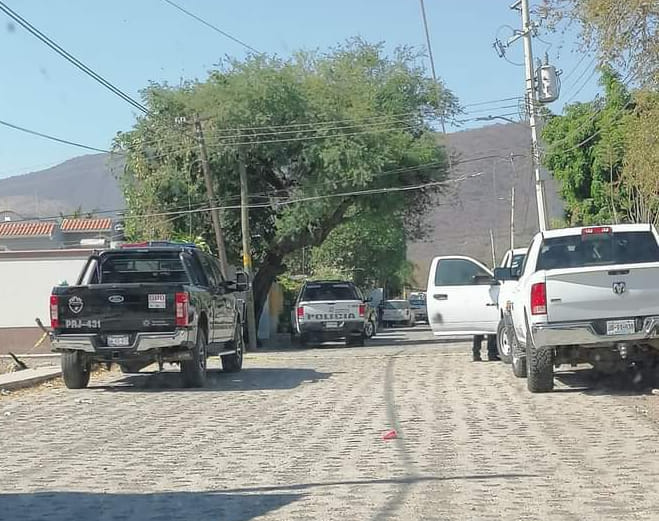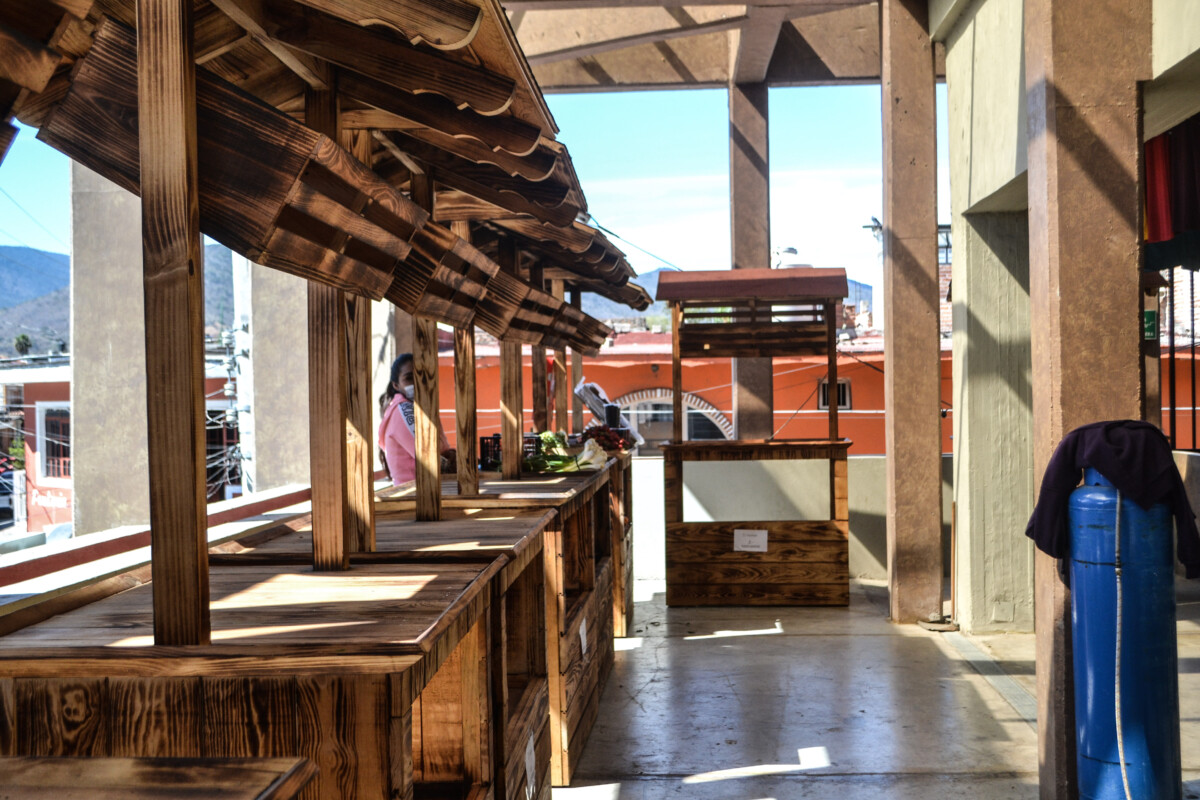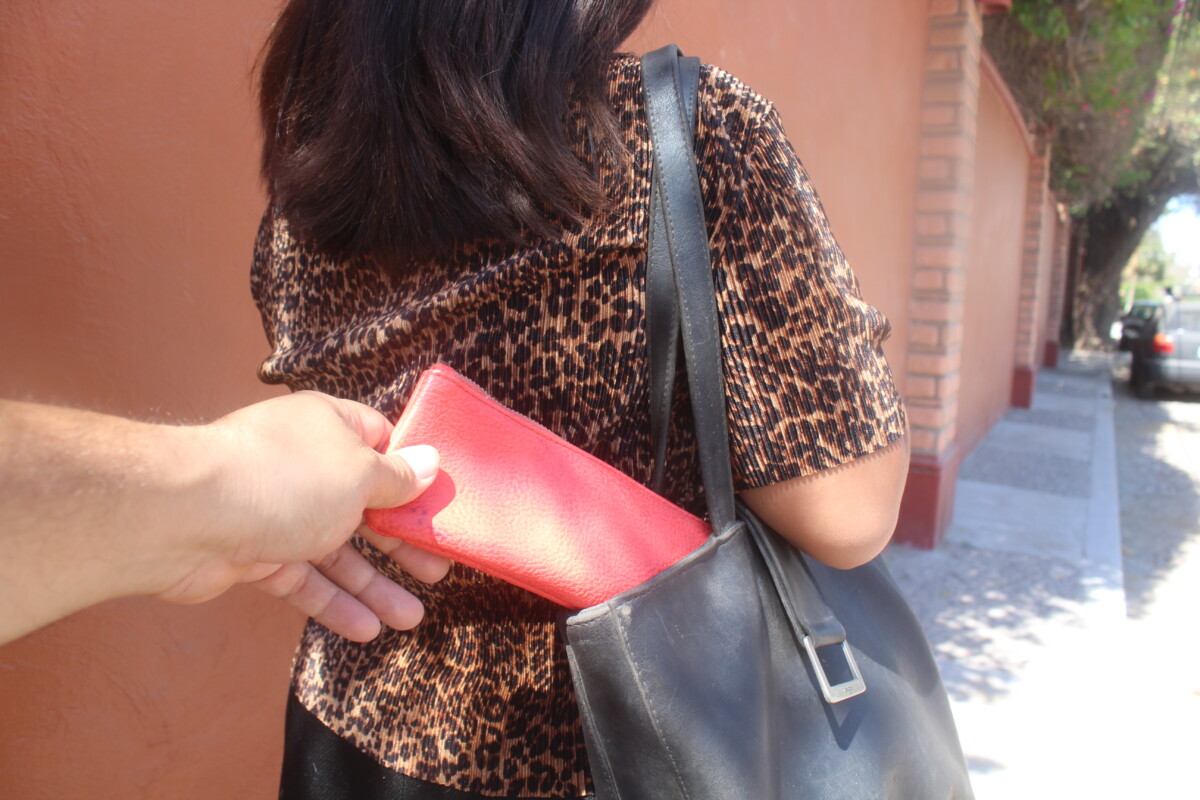gente
The body of a man handcuffed and shot dead was found in Tuxcueca
Police officers arrive at the scene in Tuxcueca
Staff.- The body and at least 5 vehicles with bullet holes were retained by Jalisco state police officers.
The confrontation took place around 2:30 am on Saturday, April 23, at the corner of Azucena street and Madero in the municipality of Tuxcueca, on the south shore of Lake Chapala. The man´s body was found with his hands tied and bullet wounds, inside a house with an open garage.
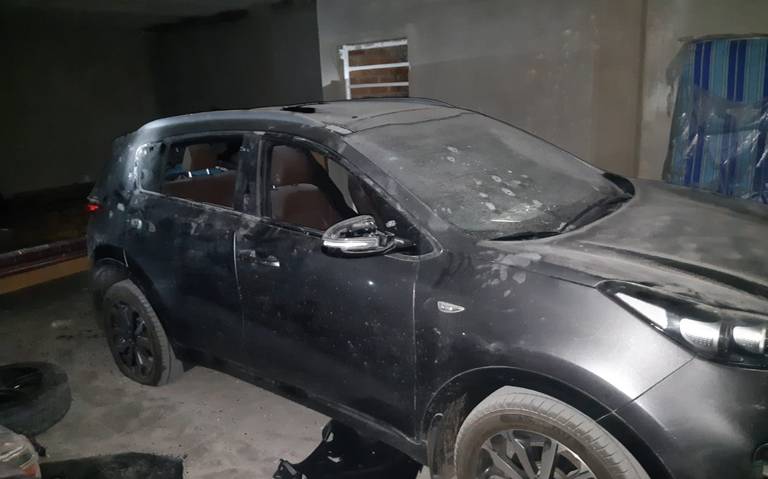
One of the seized vehicles
Several vehicles were recovered from the house along with shell casings of assorted calibers. The vehicles included a gray Kia Sportage van with Jalisco license plates, a low displacement motorcycle, a RAV 4 pickup truck without license plates that had been reported stolen in 2019, a gray Vitara pickup truck with Oaxaca license plates, and a white Chevy Van with Mexico state license plates, all of them with bullet holes.
Translated by Paul Weeks
A teenage girl from Chapala has been missing for more than eleven days.
Julissa Esmeralda Oliveros, 13 years old, disappeared in the municipal capital of Chapala on April 17.
Jazmín Stengel (Chapala).- Thirteen -year-old Julissa Esmeralda Oliveros of Chapala, has been missing since April 17 but an Amber Alert has not been issued despite the fact that the teenager’s mother has already filed a complaint with the Public Prosecutor’s Office.
The Amber Alert is a tool that «helps in the prompt location and recovery of children and adolescents at risk of suffering serious harm due to lack of location», according to the Jalisco State Government’s website.
According to her mother, Julissa Esmeralda Oliveros was last seen in the city of Chapala in a security camera image of her running in front of La Cristianía Park, along González Gallo Avenue.
Around 6:00 p.m. on April 17 Julissa was riding her bicycle with her older brother in the park, neighbors have told the mother that on that day they saw her on a yellow or green motorcycle heading «to the nursery», on Gonzalez Gallo Avenue.
Julissa Esmeralda has brown hair, small eyes and a thin mouth. She was wearing blue jeans with a long-sleeved black blouse and black sneakers and carrying a woven blue backpack.
The Strategic Security Coordinator of the State of Jalisco, Ricardo Sánchez Beruben, declared during his visit to Chapala on April 26th, that he was aware of the case of the missing child, but he has not reviewed the investigation file to establish a security strategy to locate her.
For this reason, Julissa’s relatives ask for the support of society in general to locate the teenager, since she was very shy and only went out accompanied by her mother or older brother, explained the family.
Any information to help locate the minor, please contact the Municipal Public Security of Chapala at (376) 765 4444.
Translated by Patrick O’Heffernan
Opinion: Looking at Life in Lakeside
By: Patrick O’Heffernan.
Regional Mexican bands and Latin Acts were shot through the program at Coachella Music and Art Festival last week– twenty Latin acts including four regional Mexican bands.
Near the top was Banda MS from nearby Mazatlán, which got the packed crowd moving with their first hit El Mechón», followed by songs like » El Color de Tus Ojos», «Hermosa Experiencia» and bit of «Qué Maldición», originally recorded with Snoop Dog. Much of the crowd seemed to know the lyrics pretty well, at least from the YouTube videos I have watched (I wasn’t there) .
Latin-Grammy winners Groupo Firme from Tijuana energized a screaming crowd of thousands with their hit “El Toxico” on Day 2. Sunday was the Coachella debut of Natanael Cano, who combines rock, rap and pop and corridos, and Ed Maverick from Chihuahuan with his singer-songwriter folk, alternative and rock music mashups.
Other Latin acts included Karol G, Niki Nicole, Anitta, Alaina Castillo, Nathy Peluso, and the Latin-Canadian Jessica Reyes along with American- Mexican bands Chicago Batman, Cuco, Ela Minus, Omar Apollo, Pabllo Vittar, and The Marias .
So why all the Latin acts and four Mexican regional bands at Coachella this year? A few Latino artists have performed at Coachella since its inception in 2001, including Café Tacvba, Julieta Venegas, Nortec Collective and Los Ángeles Azules, but they really broke through in 2019 with the flamenco fusion artist Rosalía, Bad Bunny, and J Balvin in Main Stage prime spots.

Regional Mexican bands and Latin Acts were shot through the program at Coachella Music and Art Festival last week– twenty Latin acts including four regional Mexican bands.
The numbers tell us why Mexican and Latin acts were there this year. MRC, which tracks music trends, revealed in its 2021 Year End Report that Latin music album consumption in the U.S. grew by 21.1% in 2021, more than any other core music genre. The number of Latin albums bought and streamed in the US hit 48.2 million and generated more than US$886.1 million, making Latin music the #5 most-consumed music genre NOB.
Latin bands are now for everyone. Whether it’s Bad Bunny, Karol G, Banda MS, or anyone playing reggaeton, research shows the audiences are of mixed cultures. Spanish lyrics are not a deterrent – people love the Latin beats even if they don’t get the lyrics.
Mexican/Spanish music has been around the US since before there was a US, when colonists from Mexico introduced the guitar to Florida and the Southwest of what is now the US. By the 1930’s California radio stations were playing norteño and mariachi for farm workers. Cuban music landed in New York City in the 40’s with Arsenio Rodríguez, Desi Arnez , and La Lupe. During the rock revolution Latinos were there with songs like “La Bomba”, and “Tequila”, and bossa nova.
This year the regional Mexican band Groupo Firme sold out 7 nights at Staples Center in LA, only one night shy of the record set by Adele, a sign that American music audiences – especially younger fans –resonate with Mexican regional sounds.
So the regional Mexican and Latin bands on the program at Coachella last week were following, not leading, the audience. Coachella2022 was another footstep in the progress of music sin fronteras – music without borders. !Viva musica de Mexico!
Vendors abandon their stalls in the market due to low sales
Abandoned wooden modules in the Municipal Market of Jocotepec each costing $7,500 pesos, Photo: Héctor Ruiz.
Héctor Ruiz Mejía (Jocotepec).- They threw in the towel. The street merchants who were relocated to the upper floor of the Municipal Market of Jocotepec decided to abandon their stalls after months of low sales.
Vendors interviewed by Laguna said that after a little more than three months of «going through an odyssey» to receive some solution or support from the City Hall to cushion the difficult economic situation they suffered after being relocated, they have opted to move to other places to sell their merchandise.
«I actually had to look for a job. This is over. We tried and fought, but we were left with no response and no support. So I too, like everyone else, am leaving,» commented one of the last vendors.
Semanario Laguna toured the second floor of the building last Tuesday, April 26th , at noon and found that, despite the more than ten million pesos invested in a rehabilitation project that would «give life» to the commercial space, it was empty.
Products such as cooked nopales, cambray onions, chopped and bagged vegetables, avocados and radishes, to mention a few, which not only energized the streets and sidewalks of the town, but were the livelihood of more than 30 families selling on Morelos Street on the outskirts of the market, are no longer for sale.
In addition to looking for another livelihood, some of the affected vendors opted to move to other parts of the town, and even decided to «try their luck» in the neighboring towns of Ajijic and Chapala to continue doing the only thing they know: selling products on the sidewalk, an activity they were no longer allowed to do in Jocotepec.
«It is a shame that they are leaving, I always used to buy my nopalitos and vegetables here with the lady, but when they moved her, it was difficult for my mother and me to go up there; and now we will have to look for someone else,» commented one of the consumers.
Of the ten wooden vendor stands installed on the upper floor of the market to relocate the street merchants, costing approximately $7,500 pesos each, only two are now being used.
City Hall has remained tight-lipped about the situation. After several meetings, negotiations and even a demonstration, officials are aware of the monetary difficulties faced by the affected merchants from the beginning of the relocation, but has not issued any statement on the matter.
Translated by Patrick O’Heffernan
Women organize to protect themselves from violence
Feminist groups in the region and the Facebook social network have also spread alleged kidnapping attempts
Jazmín Stengel (Chapala).- The Facebook post of an alleged attempted kidnapping of a student of a language academy and the report of the disappearance of a teenage girl in Chapala, has motivated a group of local women to ask the authorities to guarantee their safety.
The women have organized themselves to collect signatures and ask the authorities for the signage of safe spaces in stores, public and private transport, free courses for self-defense and advertising on the lakeshore to make society aware of the violence to which they are exposed in their daily lives. Several measures are already active in Chapala,sbut the women say they need more.
The women also ask for counseling and protection for victims, free psychological care, a hotline for emergencies and the activation of the purple patrol of female offices.
However some of the measures they ask for have been active in Chapala since the beginning of this administration. For example, there is a purple patrol with six trained female officers that respond to public safety emergency numbers 24 hours a day. The Women’s Institute, located at 69 Niños Héroes Street in the municipality, provides free counseling and follow-up to victims.
The cases that have been reported include the April 22 Facebook post of the private language school People Bilingual Training that one of its students was grabbed by men handing out flyers at the Chapala bus station, who tried to pull her into a parked car in front of the station. The student was helped by a woman selling vegetables and managed to escape.
According to the publications and victims consulted by Laguna, many young women have been chased or stalked by men in cars.
Although one of the threats have been reported to Chapala Public Security or formal complaints filed in the Public Prosecutor’s Office about kidnapping attempts or pursuits of women, Chapala Public Security Commissioner Sergio Conzuelo Ramirez has already ordered stepped-up security strategies and increased citizen information to work on the prevention of crime against women.
Jalisco Strategic Coordinator of Public Security Ricardo Sanchez Beruben said he was not aware of any alleged attempt to kidnap women, since none of the alleged victims have formally filed a complaint.
Sanchez Beruben said that the audio messages that circulated a few days ago warning of the kidnapping of women by criminal groups have circulated in different states of Mexico since 2019.
Translated by Patrick O’Heffernan
Localizan a 44 personas desaparecidas en la última semana de abril en Jalisco
Diversos operativos de búsqueda de la Fiscalía resultaron en la localización de 44 personas en Jalisco. Foto: Notisistema.
Redacción.- La Fiscalía Especial para Personas Desaparecidas (FEPD) de la Fiscalía de Jalisco (FE) reportó la localización de 44 personas desaparecidas durante la semana del 25 de abril al 1 de mayo pasado, tras diversos operativos de búsqueda.
La FEPD informó que del periodo del 23 al 29 de abril, fueron judicializadas 6 personas contra las que existen datos de prueba suficientes que hacen presumir su probable responsabilidad en la comisión de delitos en la materia, por lo que se espera que en breve sean vinculadas a proceso y las pesquisas continúen.
De las acciones implementadas, la Fiscalía Especial destacó la labor de Alerta Amber Jalisco, toda vez que mediante indagatorias con perspectiva de género, fueron localizadas 15 niñas, niños y adolescentes que contaban con reporte y ya se encuentran sanos y salvos con su familia.
La FEPD refirió que durante la semana del 23 al 29 de abril, tuvo acercamiento con 595 ciudadanas y ciudadanos que acudieron a solicitar información, por lo que les presentó avances con respecto a sus indagatorias, además de que se les brindó la atención jurídica necesaria, entre otros aspectos.
Pickpockets operating in Lakeside; more than 17 thefts reported
The thefts are not violent, but rather crimes of opportunity. Illustrative photo: Sofía Medeles.
Sofía Medeles (Ajijic).- Purse thefts have been reported in at least 17 places in Lakeside in the towns of Ajijic, San Antonio Tlayacapan, the municipal capital of Chapala and San Juan Cosalá,. The thieves have mostly targeted tourists and Expats.
One of the sites of the incidents was the Lake Chapala Society (LCS) in Ajijic, a popular gathering place for both Expats and local Mexicans. LCS executive director Luis Pacheco assured Laguna that the two mishaps were not violent, but rather accomplished by distracting the victims.
«The two thefts occurred in LCS were not violent,. The thieves – a foreign woman and two Latinos – use a practiced modus operandi. There are at least 17 public spaces and restaurants, or businesses, where robberies of this type have occurred and, in some of them, the thieves identified are the same ones who operated here,» said Luis Pacheco.
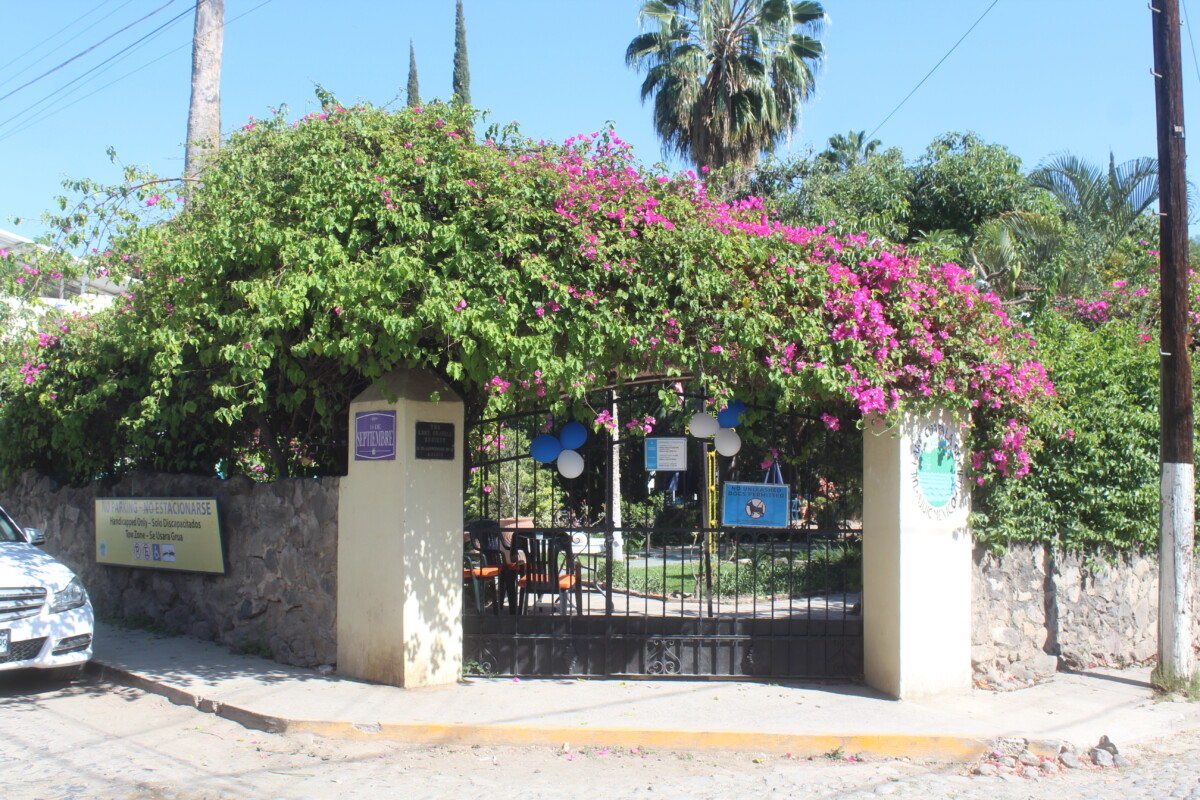
In the Lake Chapala Society property, located in the downtown area of Ajijic, there have been two incidents of this type. Photo: Sofía Medeles.
According to the LCS executive director, the modus operandi of the pickpockets is that the foreign woman approaches to talk to other tourists or Expat residents to distract them, while the other two people create a barrier and grab their possessions.
Pacheco pointed out that the person in charge of Ajijic’s office, Maximiano Macías Arceo, Chapala Security Commissioner Sergio Conzuelo Ramírez, and the municipal president, Alejandro Aguirre Curiel, are aware of the events, so they are working together to create a crime prevention campaign in the area.
This was confirmed by Macías Arceo who said that this campaign would be focused on training restaurant owners, administrators, block chiefs, etc., in the prevention of crime, and that, although there is still no date to start, it will be announced through the department of Social Communication.
Luis Pacheco said that the most important to reduce crimes is to reestablish the social fabric where neighbors will have co-responsibility and support each other to take care of themselves and educate themselves about this type of crime.
Translated by Patrick O’Heffernan
First Earth Day celebration is successful, although participation was lower than expected
Opening ceremony on Friday, April 22. Photo: Sofia Medeles.
Sofía Medeles-Ajijic. The first Earth Day commemoration in Ajijic which took place on April 22, 23 and 24 t was a success although participation was lower than the organizers hoped for. The three-day event consisted of a series of conferences and other activities designed to raise awareness about the need to care for the environment.
Between 150 to 200 people attended each day for a total of 500 and 600 people, mostly adults although there were also interested children.
The first day began with an opening ceremony asking permission to the elements and deities to allow the participants to respectfully carry out the programmed activities. During the closing ceremony on the last day, a tribute and offering was made to Lake Chapala.
The conference speakers included activists who work to safeguard the integrity of both the lake and the mountains, such as Manuel Villagómez Rodríguez, Luis Valdivia Ornelas, Raquel Gutiérrez Nájera and the local resident Julio Carmona. There were also music and film presentations, and tables for information and sale of ecological products.
«I think the event was effective both in the professional and academic quality of the presenters, said Noris Binet, who added that, “ I think it was very ambitious to do it in three days since it demands consistent participation by the public.”
Binet explained that, “ There were three relevant focuses of the event: that battles of this type can and have been won, that Lake Chapala urgently needs to become a Ramsar site, that a mapping of endangered and reserved areas needs to be done that clearly defines where not to buy or build, something the Expats requested I a petition. ( Lake Chapala is listed on the RAMSAR Information Service as RAMSAR as Ramsar Site no. 1973. For its extensive wetlands).
Sihara Casillas Gaeta, another of the organizers, commented that this type of event helps people to learn about the type of land in which they live, about the local aquifers, and to take stock of how corruption has contributed to the deterioration of natural water reservoirs, which helps convince people to be more vigilant.
Jane Custer, who was in charge of translations at the event, said that she was very pleased to see the Mexican and foreign communities of Ajijic together in one place acquiring knowledge to protect the Lake and the environment.
Noris stated that, in the coming years, she believes the event could improve in terms of local participation, involving neighbors and members of indigenous communities, talking about their problems related to environmental issues. She plans to produce an official document summarizing the most important points of the event to be presented to government authorities, as well as the creation of a citizen and academic observatory to monitor and denounce environmental destruction.
Translated by Patrick O’Heffernan
Opinion: Looking at Life in Lakeside
By: Patrick O’Heffernan
Regional Mexican bands and Latin Acts were shot through the program at Coachella Music and Art Festival last week– twenty Latin acts including four regional Mexican bands.
Near the top was Banda MS from nearby Mazatlán, which got the packed crowd moving with their first hit El Mechón», followed by songs like » El Color de Tus Ojos», «Hermosa Experiencia» and bit of «Qué Maldición», originally recorded with Snoop Dog. Much of the crowd seemed to know the lyrics pretty well, at least from the YouTube videos I have watched (I wasn’t there) .
Latin-Grammy winners Groupo Firme from Tijuana energized a screaming crowd of thousands with their hit “El Toxico” on Day 2. Sunday was the Coachella debut of Natanael Cano, who combines rock, rap and pop and corridos, and Ed Maverick from Chihuahuan with his singer-songwriter folk, alternative and rock music mashups.
Other Latin acts included Karol G, Niki Nicole, Anitta, Alaina Castillo, Nathy Peluso, and the Latin-Canadian Jessica Reyes along with American- Mexican bands Chicago Batman, Cuco, Ela Minus, Omar Apollo, Pabllo Vittar, and The Marias .
So why all the Latin acts and four Mexican regional bands at Coachella this year? A few Latino artists have performed at Coachella since its inception in 2001, including Café Tacvba, Julieta Venegas, Nortec Collective and Los Ángeles Azules, but they really broke through in 2019 with the flamenco fusion artist Rosalía, Bad Bunny, and J Balvin in Main Stage prime spots.
The numbers tell us why Mexican and Latin acts were there this year. MRC, which tracks music trends, revealed in its 2021 Year End Report that Latin music album consumption in the U.S. grew by 21.1% in 2021, more than any other core music genre. The number of Latin albums bought and streamed in the US hit 48.2 million and generated more than US$886.1 million, making Latin music the #5 most-consumed music genre NOB.
Latin bands are now for everyone. Whether it’s Bad Bunny, Karol G, Banda MS, or anyone playing reggaeton, research shows the audiences are of mixed cultures. Spanish lyrics are not a deterrent – people love the Latin beats even if they don’t get the lyrics.
Mexican/Spanish music has been around the US since before there was a US, when colonists from Mexico introduced the guitar to Florida and the Southwest of what is now the US. By the 1930’s California radio stations were playing norteño and mariachi for farm workers. Cuban music landed in New York City in the 40’s with Arsenio Rodríguez, Desi Arnez , and La Lupe. During the rock revolution Latinos were there with songs like “La Bomba”, and “Tequila”, and bossa nova.
This year the regional Mexican band Groupo Firme sold out 7 nights at Staples Center in LA, only one night shy of the record set by Adele, a sign that American music audiences – especially younger fans –resonate with Mexican regional sounds.
So the regional Mexican and Latin bands on the program at Coachella last week were following, not leading, the audience. Coachella2022 was another footstep in the progress of music sin fronteras – music without borders. !Viva musica de Mexico!
Pickpockets operating in Lakeside; more than 17 thefts reported
Sofía Medeles- Ajijic. Purse thefts have been reported in at least 17 places in Lakeside in the towns of Ajijic, San Antonio Tlayacapan, the municipal capital of Chapala and San Juan Cosalá,. The thieves have mostly targeted tourists and Expats.
One of the sites of the incidents was the Lake Chapala Society (LCS) in Ajijic, a popular gathering place for both Expats and local Mexicans. LCS executive director Luis Pacheco assured Laguna that the two mishaps were not violent, but rather accomplished by distracting the victims.
«The two thefts occurred in LCS were not violent,. The thieves – a foreign woman and two Latinos – use a practiced modus operandi. There are at least 17 public spaces and restaurants, or businesses, where robberies of this type have occurred and, in some of them, the thieves identified are the same ones who operated here,» said Luis Pacheco.
According to the LCS executive director, the modus operandi of the pickpockets is that the foreign woman approaches to talk to other tourists or Expat residents to distract them, while the other two people create a barrier and grab their possessions.
Pacheco pointed out that the person in charge of Ajijic’s office, Maximiano Macías Arceo, Chapala Security Commissioner Sergio Conzuelo Ramírez, and the municipal president, Alejandro Aguirre Curiel, are aware of the events, so they are working together to create a crime prevention campaign in the area.
This was confirmed by Macías Arceo who said that this campaign would be focused on training restaurant owners, administrators, block chiefs, etc., in the prevention of crime, and that, although there is still no date to start, it will be announced through the department of Social Communication.
Luis Pacheco said that the most important to reduce crimes is to reestablish the social fabric where neighbors will have co-responsibility and support each other to take care of themselves and educate themselves about this type of crime.
Translated by Patrick O’Heffernan
© 2016. Todos los derechos reservados. Semanario de la Ribera de Chapala
